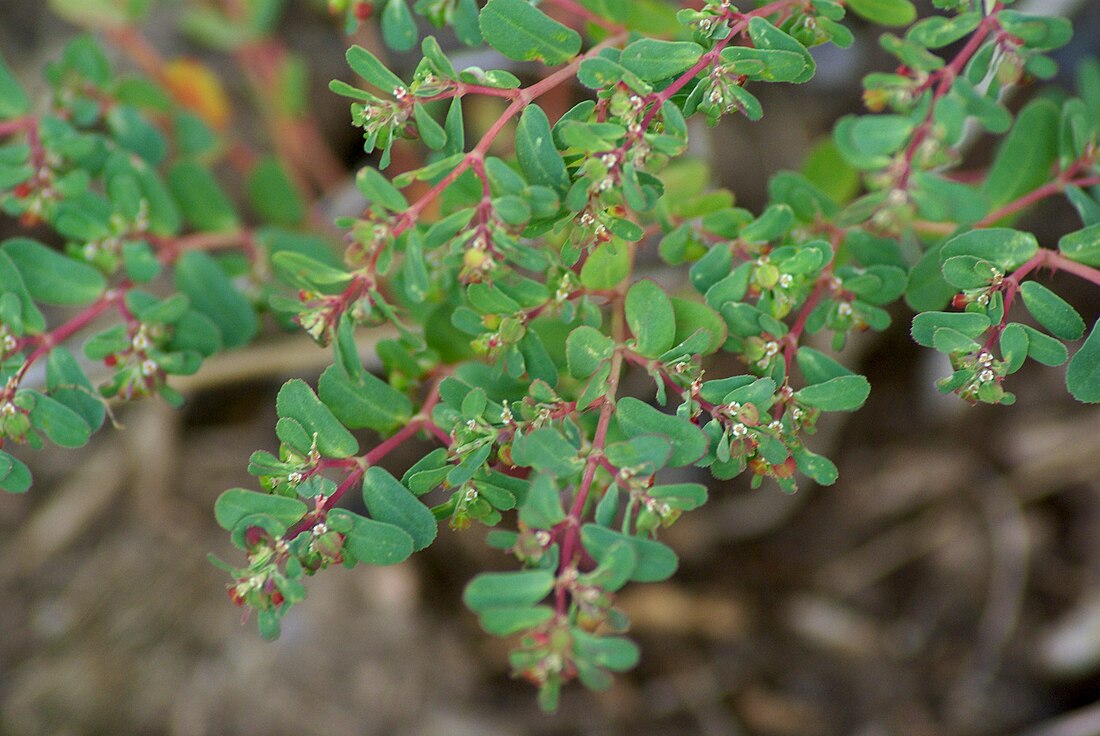Euphorbia serpyllifolia
Species of flowering plant From Wikipedia, the free encyclopedia
Euphorbia serpyllifolia (Euphorbia serpillifolia[note 1]) is a species of euphorb known by the common names thymeleaf sandmat or thyme-leafed spurge. It is native to a large part of North America from Canada to Mexico, where it is a common member of the flora in many types of habitat. This is an annual herb growing as a prostrate mat or taking a somewhat erect form. The oblong leaves are up to about 1.5 centimeters long, sometimes hairy and finely toothed along the edges. The tiny inflorescence is a cyathium about a millimeter wide. It bears scalloped white petal-like appendages arranged around the actual flowers. At the center are several male flowers and one female flower, which develops into a lobed, oval fruit up to 2 millimeters wide. This plant had a number of traditional medicinal uses for many Native American groups.[4]
| Euphorbia serpyllifolia | |
|---|---|
 | |
| Scientific classification | |
| Kingdom: | Plantae |
| Clade: | Tracheophytes |
| Clade: | Angiosperms |
| Clade: | Eudicots |
| Clade: | Rosids |
| Order: | Malpighiales |
| Family: | Euphorbiaceae |
| Genus: | Euphorbia |
| Species: | E. serpyllifolia |
| Binomial name | |
| Euphorbia serpyllifolia | |
| Subspecies | |
| |
| Synonyms[1] | |
| |
Subspecies
- Euphorbia serpyllifolia subsp. hirtula is limited to California and Baja California.[5]
- Euphorbia serpyllifolia subsp. serpyllifolia has far wider distribution throughout much of North America with a gap in interior eastern states of the United States.
Uses
The Zuni people use it as a cathartic, an emetic, and to increase the flow of milk in a breastfeeding mother.[6]: 51 The leaves are used to sweeten corn meal and chewed for the pleasant taste.[6]: 67
Notes
- The original spelling of the name, E. serpillifolia has generally been "corrected" to E. serpyllifolia,[2] although that correction is not in accord with article 60 of the International Code of Nomenclature for algae, fungi, and plants.[3]
References
External links
Wikiwand - on
Seamless Wikipedia browsing. On steroids.
